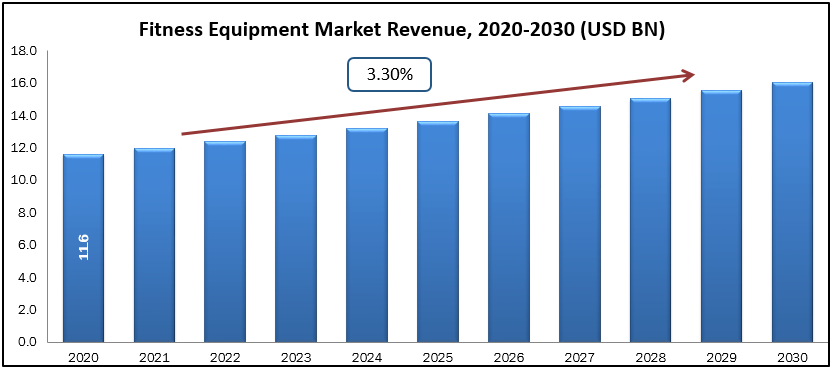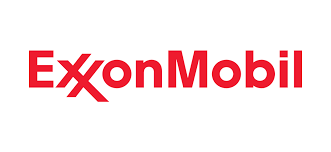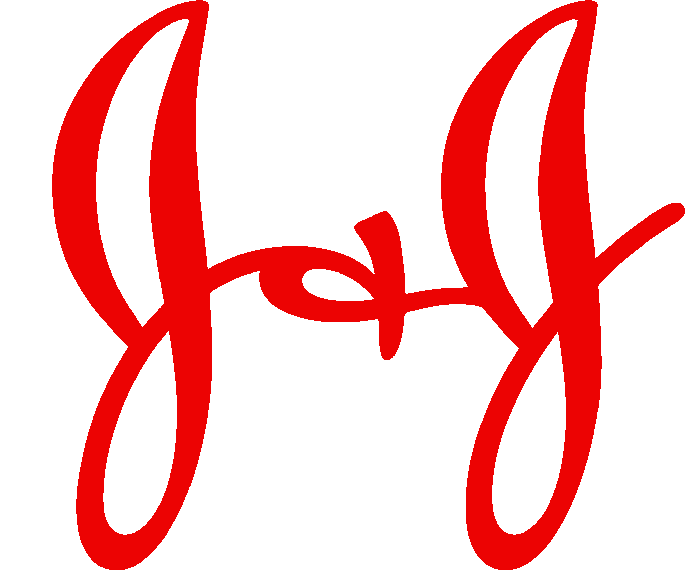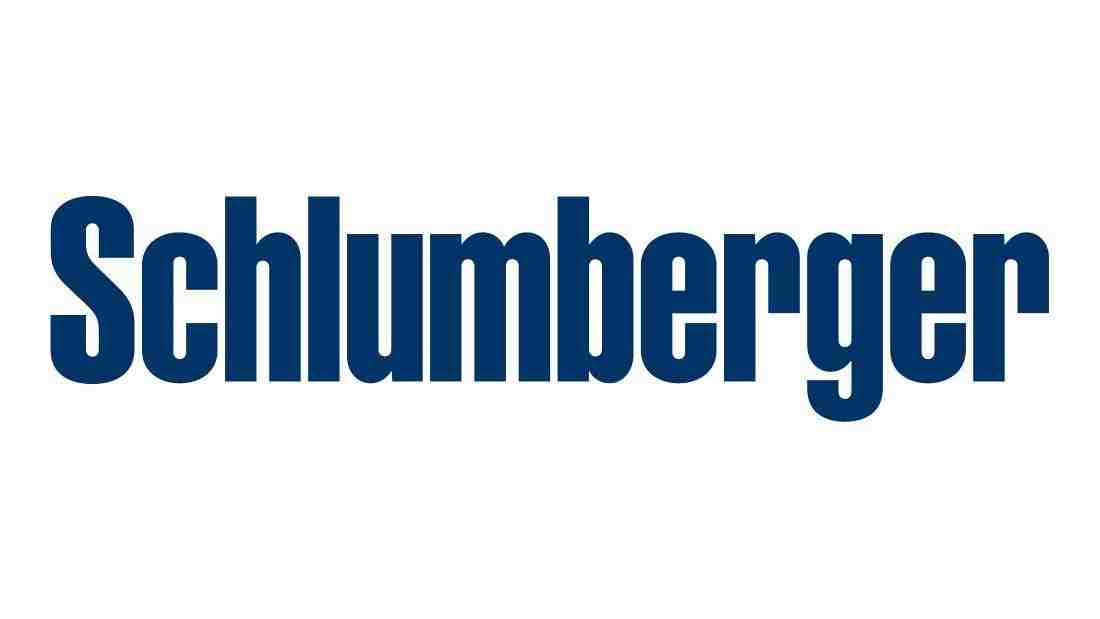Fitness Equipment Market size was valued at USD 11.6 billion in 2020, and is expected to reach USD 16.5 billion by 2030, registering a CAGR of 3.30% from 2020 to 2030. Physical activity or exercise enhances health, improves body strength, and reduces the chance of several disease such as cardiovascular disease, cancer and type-2 diabetes. Exercises prevent body from obesity and provide immediate and long term health benefits. Nowadays, society is highly dependent on technology for daily activities and technological advancements limited the regular physical activities. Sedentary lifestyle due to the technological development increased the necessity of physical workouts for body weight balance and to prevent cardiovascular disorders. It is observed that physical fitness is the perfect precaution to exterminate the risk of certain diseases. Increasing number of health issues experienced by population in present times led to the spontaneous growth of fitness training centers around the globe. Growing number of health clubs and fitness centers escalated the demand of fitness equipment and this demand is anticipated to increase in the upcoming years. Weightlifting machines, treadmills, stationary bicycles are some of the major equipment preferred by customers for muscle building and cardiovascular fitness.
Market Segmentation:
On the basis of type global fitness equipment market is classified into cardio respiratory equipment, muscular equipment, flexibility equipment, body fatness equipment, and others. On the basis of end use, market is categorized into homecare, hospitals, gym centers/health clubs, and others. According to region, fitness equipment market is segmented into North America, Europe, Asia Pacific, and RoW.
Market Dynamics and Factors:
Increasing geriatric population contributes to the fitness equipment market. At present, approximately 900 million of the total population is above 60 years and is expected to increase to almost 1.40 by 2030. Around 65% of this aged population resides in a developing nation. In addition to this, rise in obese population also fueled the fitness equipment market growth. According to a research study in 2014, approximately 1.90 billion individuals were obese in which 600 million were overweight. Rising health concerns among population and consciousness among millennial populace regarding the physical attractiveness are influencing the fitness equipment market positively. Moreover, incorporation of smart devices in fitness equipments and gyms propels the fitness machines market growth. Actual exercise timings and customer performance can be monitored by the connected devices such as smart watches and activity trackers. Development of smart gyms and increasing demand for household fitness machines contribute to the market expansion. In addition to this, corporate companies provide in-office gyms that provide an opportunity for employees to exercise in the company premises that helps to save money and time. These organization offers fitness packages and health policies for creating a healthy environment which aids in fitness equipment market growth. To reduce the excess stress owing to the intense competition in the present time also attracts young population to fitness and health clubs. However, lack of awareness in rural population of developing countries regarding the health concerns and benefit of physical fitness hampers the fitness equipment market growth. In addition to this, high cost of maintenance and long downtime of machines is the major concerns of purchasers. Average employment time of equipment in health centers and gyms are approximately 16 hrs per day and this causes wear and tear of the equipment. Spares and repair of fitness machines are very expensive. Growing health awareness programs and introduction of more products in various sectors is anticipated to boost the fitness equipment market growth in upcoming years. The U.S Department of Health and Human Services launched a physical activity program for children that assure improved health and students’ performances. Rising demand for resale equipments is being witnessed for upgrading fitness installations in hospitals, hotels, health centers and among individual users and smaller fitness establishments. This trend is becoming a major challenge for the sale of new equipments.
Geographic Analysis:
North American is dominating fitness equipment market share of 35% in terms of revenue in 2018 owing to the health problems and obesity among the population. Awareness in this region regarding the health benefits and the increase in number of fitness centers also supports North America top hold the top position. Additionally, bank loans with low interest loans for fitness and gym centers are also increasing the market growth. Due to rapid urbanization and change in lifestyle attracts population to fitness centers and this aid to the fitness equipment market growth at a rapid pace in Asia Pacific region.
Competitive Scenario:
The key players in global fitness equipment industry are Icon Health & Fitness, Inc, Brunswick Corporation, Johnson Health Tech Company ltd, Technogym, Amer Sports Oyj, Nautilus, Inc, True Fitness Technology Inc, Torque Fitness LLC, Fitness EM, ElliptiGO Inc., Star Trac Health and Fitness Inc., Precor Incorporated, Paramount Fitness Corp, and NordikTrack Inc.
Fitness Equipment Market Report Scope
| Report Attribute | Details |
| Analysis Period | 2020–2030 |
| Base Year | 2021 |
| Forecast Period | 2022–2030 |
| Market Size Estimation | Billion (USD) |
| Growth Rate (CAGR%) | 3.3 % |
|
| By Equipment Type (Cardio-Respiratory Equipment, Muscular Equipment, Flexibility Equipment, Body Fatness Equipment, and Others), By End User (Hospital, Gym Centers/Health Clubs, Homecare, and Others) |
| Geographical Segmentation | North America (U.S., Canada, Mexico) Europe (UK, Germany, Italy, France, Rest of Europe), Asia-Pacific (China, Japan, India, Australia, Rest of APAC), South America (Brazil, Argentina, Rest of SA), MEA (UAE, Saudi Arabia, South Africa) |
| Key Companies Profiled | Icon Health & Fitness, Inc, Brunswick Corporation, Johnson Health Tech Company ltd, Technogym, Amer Sports Oyj, Nautilus, Inc, True Fitness Technology Inc, Torque Fitness LLC, Fitness EM, ElliptiGO Inc., Star Trac Health and Fitness Inc., Precor Incorporated, Paramount Fitness Corp, and NordikTrack Inc. |







